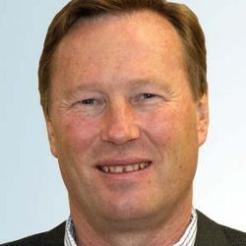Community Foundation Network chair Matthew Bowcock has admitted that his estimate of £1bn for how much the tax relief cap will cost charities, is based on a “very simple, high-level analysis, because we don’t have the details we need”.
Bowcock wrote to the Evening Standard last week to say that the proposed cap could cost the sector £1bn, while only earning additional tax revenues for the Exchequer of £200m. Civilsociety.co.uk had queried how he arrived at the £1bn figure, and this morning he responded.
Bowcock admitted his estimate was merely a guess, that £2bn of the total £11bn given by private donors is given by donors whose giving would exceed the tax relief cap. But it is “based on a common-sense analysis of the facts, such that we know them”.
Bowcock explained that his starting point was Coutts’ Million Pound Donors Report, which said that in 2009/10, 174 people made donations to charity of more than £1m each, amounting to a total of £1.3bn.
“What I then tried to do was extrapolate out how much of the total £11bn of private giving is given by donors who would be caught by the proposed tax relief cap. We don’t know, it’s very difficult to say. Only HMRC has that data, and they won’t give it out.
“But I don’t think it’s unreasonable to say there’s a very good chance that maybe £2bn is given above the proposed cap. Therefore how much will reduce? Again, we don’t know, we’re all trying to guess what people’s behaviour might be if they didn’t receive tax relief of a certain amount. But we do know that if all those donors were paying tax at the higher rate of 45 per cent, there’s £950m gone.”
He added that the Philanthropy Review, in its report published six months ago, expressed its frustration at the lack of hard data about charitable giving. “It’s daft that we know that 47 or 48 per cent of donations comes from about 7 per cent of donors, but we don’t know anything about what’s within that. Is it all from people at the top end, people in the middle, or people at the bottom end giving £100 a month?
“No wonder the Treasury is in the mess it’s in – they made this decision without knowing themselves where half of all giving comes from.”
Hayday writes to FT and Telegraph
Separately, Charity Bank chief executive Malcolm Hayday has written to the FT and the Daily Telegraph to argue that the government’s stated rationale for the cap ignores how charitable donations are used.
He wrote: “As a charity ourselves, we have many donors and investors who benefit from tax relief. We then lend their money to small or medium-sized charities and community enterprises throughout the United Kingdom, many of which could not do their vital work for society without such help.
“A study on what is achieved by charities and community enterprises we support, using the government’s own formula, showed an average £7 return to society for every £1 foregone by the Exchequer.
“If this is more than the government can achieve from spending the tax, we should encourage more use of tax reliefs for charity, rather than limiting it.”









